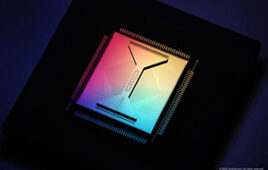Quantinuum, the world’s largest integrated quantum computing company, and RIKEN, Japan’s largest comprehensive research institution and home to high-performance computing (HPC) center, have announced an agreement in which Quantinuum will provide RIKEN access to its highest-performing H1-Series ion-trap quantum computing technology. Under the agreement, Quantinuum will install the hardware at RIKEN’s campus in Wako, Saitama.
 The deployment will be part of RIKEN’s project to build a quantum-HPC hybrid platform consisting of high-performance computing systems, such as the supercomputer Fugaku and quantum computers. The integrated hardware platform will support a large-scale software research program in which researchers at RIKEN — together with collaborators Softbank, University of Tokyo, and Osaka University — will develop the software tools and applications required to integrate quantum computers and supercomputers most effectively.
The deployment will be part of RIKEN’s project to build a quantum-HPC hybrid platform consisting of high-performance computing systems, such as the supercomputer Fugaku and quantum computers. The integrated hardware platform will support a large-scale software research program in which researchers at RIKEN — together with collaborators Softbank, University of Tokyo, and Osaka University — will develop the software tools and applications required to integrate quantum computers and supercomputers most effectively.
As the project goal, RIKEN and its collaborators aim to demonstrate the advantages of such hybrid computational platforms for deployment as services in the future post-5G era. This project is commissioned by the New Energy and Industrial Technology Development Organization (NEDO), a national research and development agency under Japan’s Ministry of Economy, Trade, and Industry.
“We are honored to be selected to be part of this ambitious, advanced project in Japan,” said Dr. Rajeeb Hazra, CEO of Quantinuum. “Quantinuum has a track record as a commercial leader in quantum computing, and we hope to bring our technical and operational know-how and contribute to achieving the project’s objectives. Our H-Series quantum computer is uniquely poised to enable ground-breaking developments by researchers around the world. We are excited that this engagement will allow researchers in RIKEN and other Japanese institutions to benefit from our H-Series quantum computer’s full power and capability.”
“Advanced quantum computers of NISQ are now moving into the practical stage as the number of qubits is increasing and the fidelity is improved. From the HPC’s point of view, quantum computers are devices that accelerate scientific applications conventionally executed on supercomputers and enable computations that cannot yet be solved by supercomputers. RIKEN is committed to developing system software for quantum-HPC hybrid computing, by leveraging its comprehensive scientific research capabilities and experience in the development and operation of cutting-edge supercomputers such as Fugaku,” said Dr. Mitsuhisa Sato, deputy director, RIKEN Center for Computational Science/director, Quantum HPC Collaborative Platform Division.
To learn more, please visit www.quantinuum.com/hardware/h1.




Tell Us What You Think!